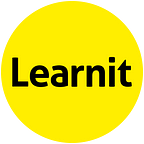Dear global education leader,
At Ansford Academy, a rural comprehensive school for students ages 11–16 in Somerset, England, teachers are trained as coaches and helping students become independent is an institutional priority, reflected in the curriculum, the timetable, and the leadership.
Every year, students and parents start the year by meeting with their coach and setting their goals. These are both academic, as well as practical: Do they want to go to university? What drives them? What kind of person do they want to be, and what will it take to get there? Pupils have workshops to manage their goals and their “coaches” check in with them regularly to see what’s on track and what’s gone off the rails.
For academic targets, the school has devised a metals system (bronze, silver, gold, platinum). Teachers tell the student which metal category prior testing puts them in. And then the students decide what metal group they want to be in. Conversations ensue about what it will take to get there.
Shonogh Pilgrim, who helped develop this system as head at Ansford (and who is featured on the podcast this week), recalls a girl whose grades hovered in the D range, but who wanted to be a platinum. She was told that would require Herculean energy and commitment, but the school would support her. She did it, nailing an A* for her GCSE, national exams set for 16 year olds.
The point of this system, Shonogh explains, is to help students identify who they want to be but also own that it’s on them to get there. “If you don’t achieve your goals now you’re not going to magically achieve them at some point in the future,” she says. “Goals are achieved if you incrementally work towards them every single day. And so what we’re trying to do is get the students to appreciate that hard work is what helps people achieve their goals, and that no one else is able to do it for you.”
Shonogh says the hardest part has been teachers who believe the data — and their own predictions — over a student’s aspiration. The problem this presents, she says, is that if students achieve only what the teacher and data predict, that won’t feel much like success. And isn’t it the job of teachers to help students achieve more than teachers — and students themselves — think they’re capable of, she asks.
Perhaps. But I couldn’t help but think that teachers were going to be proven right here. I have two tween/teen-aged children and among their many superpowers, prediction is not one of them. I love Shonogh’s response:
“Of course, there are students who don’t [achieve the goals they set], but some of that is not necessarily about the students, it’s about the fact that the teacher believes that they can’t. And we all know that if we believe they can’t, we have lots of ways that we can make that happen. without even realizing it. It’s called bias isn’t it?”
In the broad scope of tools to improve education, recognising our biases on everything from expectations and exams to what learning gaps exist might feels not only important but also within reach for everyone.
I’d recommend listening to the episode (I would, wouldn’t I? That’s also bias). Shonogh details how Covid-19 accelerated Ansford’s student agency project, how the pandemic challenged her as a deeply introverted leader (who ended up posting live Instagram stories every day), and why she just left her headship at a school she loves dearly to go fix a very broken system.
Stay curious
Jenny
